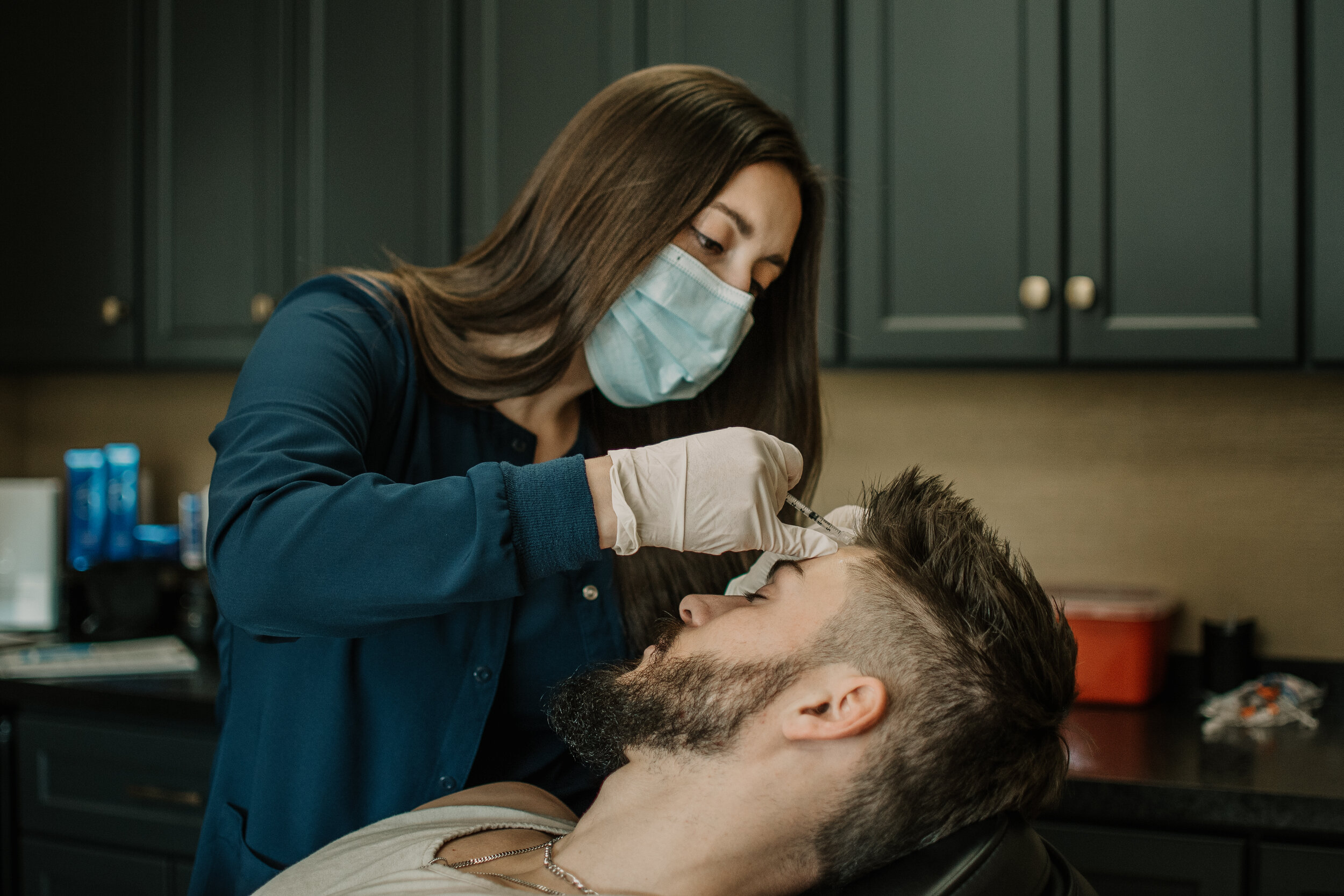
Why is Botox so effective?
Botox is a form of botulinum toxin, a neurotoxin produced by the bacteria that causes botulism. When the Botox botulinum toxin is purified and used in tiny doses in specific areas, it temporarily reduces muscle contractions for approximately 3 months.
Botox is only FDA-approved for chronic migraines, which means headaches on 15 or more days a month.
Worldwide, Botox is used as a medical treatment 80% of the time, and only used for cosmetic purposes 20% of the time, Injecting Botox to treat migraines is a medical procedure.
Botox is injected into the muscle and it goes into the pain fibers involved in headaches. The Botox then goes into the pain fibers and keeps them from firing. This prevents activation of pain networks in the brain. If those fibers aren't firing, then you don't have pain.
When people hear the word Botox, they usually think one to two things. “Isn’t that for wrinkles?” And “I don’t want a toxin in my body.”
Yes, it does reduce wrinkles, but that isn’t why we are using it for migraines. That is a side effect. Botox is a neurotoxin produced by the bacteria that causes botulism. When the botulinum toxin is purified and used in tiny doses in specific areas, it temporarily reduces muscle contractions for approximately 12 weeks. The botox remains local and does not disperse throughout the entire body. There are no side effects and there are no interactions with any other medications taken. Botox reduces muscle contraction and tension, which occurs with headaches and migraines. Botox is injected into the muscles of the head and neck. There are several muscles that connect to the head that are involved in headaches. Botox attaches to the nerve endings where it is injected, and serves only one function. Botox blocks the release of chemicals involved in muscle contraction. This prevents the activation of pain sensation in the brain associated with muscle tension, pain, and inflammation. Findings also indicate that botox reduces the release of neurotransmitters that cause migraine pain.
There is a bit of disconnect on why this helps. Research shows migraines are vascular related, but treatment supports migraine is muscular related. The general concept you need to understand is that the vasculature of the muscles of the head and specifically the tension in those muscles is generally what Botox for migraine targets.
What you need to know about Botox and Migraines.
We’ve all heard of Botox, responsible for generations of smooth foreheads, but Botox has also brought relief to many people who suffer from chronic medical conditions. In 2010, Botox was approved for use with chronic migraine. In fact, 80% of Botox used is for medical conditions and only 20% is for cosmetic uses. Three years ago, The Facebar opened its Migraine Clinic in Partnership with Allergan’s Neuroscience Division. Over 300 active patients later we are now opening new offices in Powell, Ohio and in Springfield, Ohio in our Medical Director’s office to expand our practice.
What Type of Headache Responds Best to Botox?
Botox is only FDA-approved for chronic migraines, which means headache on 15 or more days a month. What does that mean? The question I ask isn’t how many migraines a month do you have? I ask how many days a month do you not suffer from migraine pain. Most migraines last several days. There is a prodromal period where the patient may feel a migraine coming on but does not yet have pain. Are you confused, clumsy, irritated, fatigued, yawning more, urinating more? Then the pain comes, How many hours does that migraine pain last? How many hours does it last with any kind of treatment? After the pain is relieved is there a day or more where recovery takes place? Fatigued, confused, irritable, slower? Now add up all of those days.

